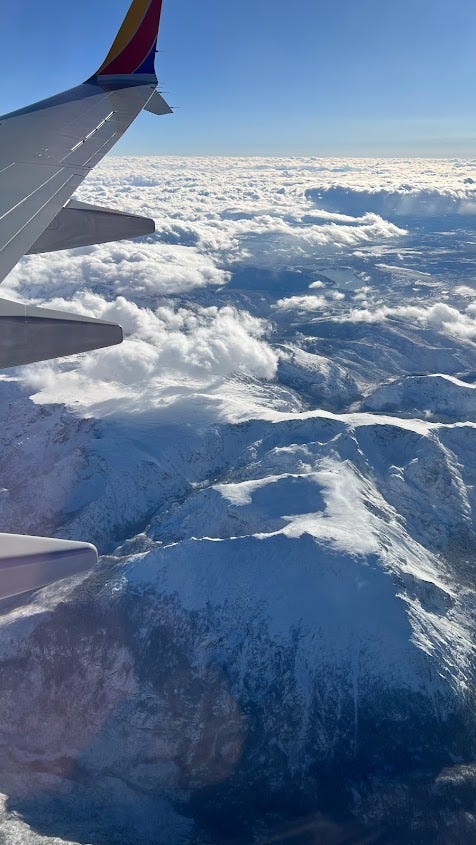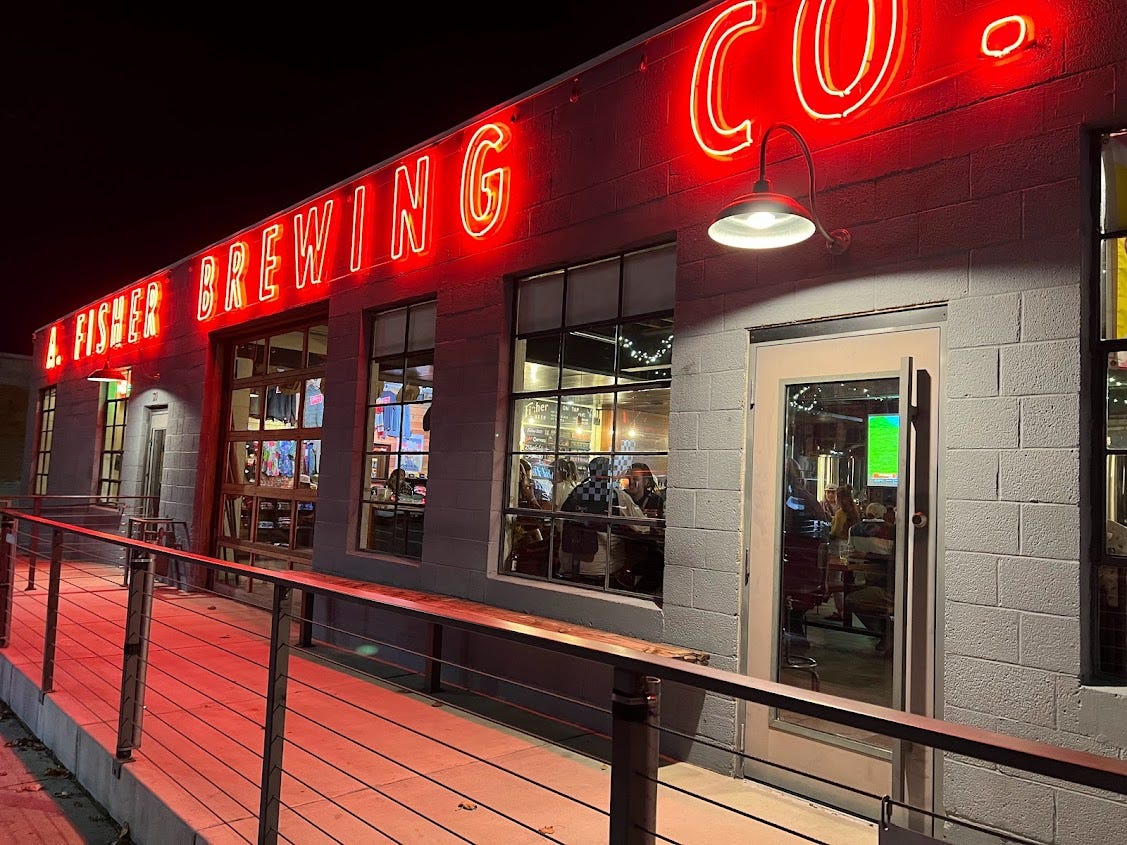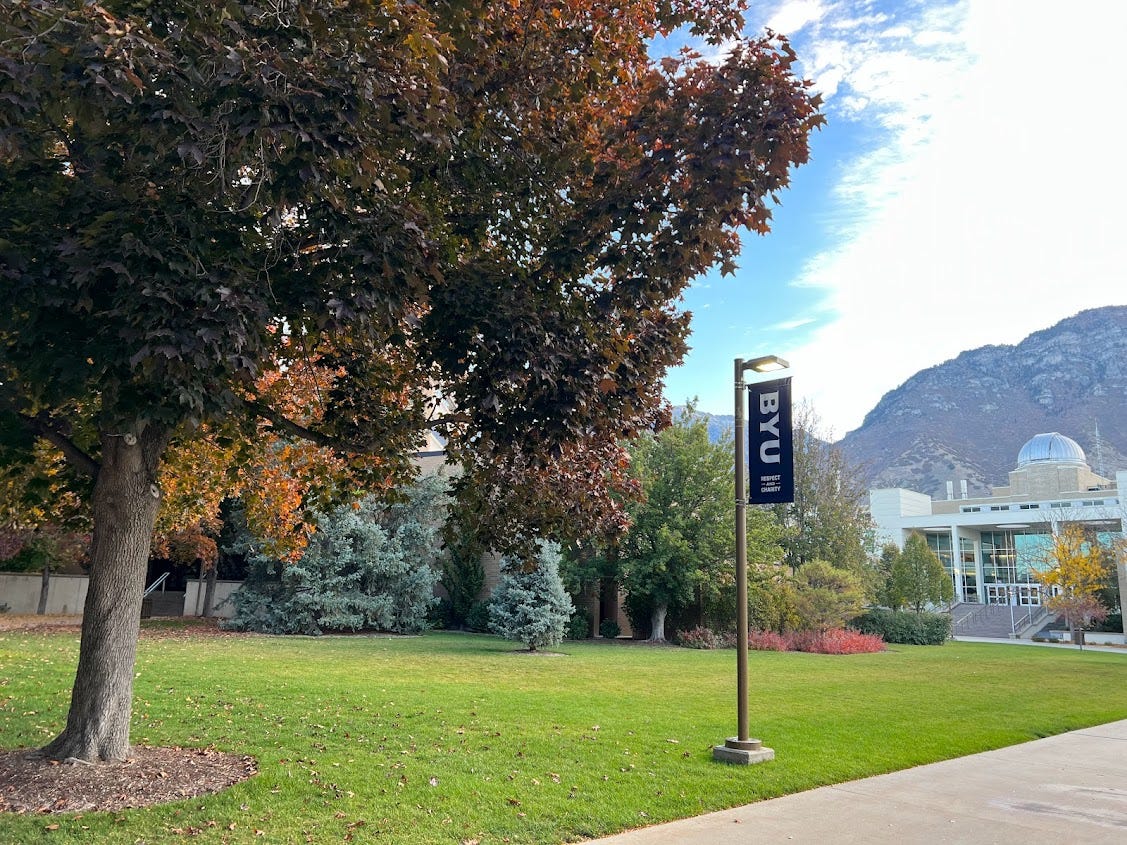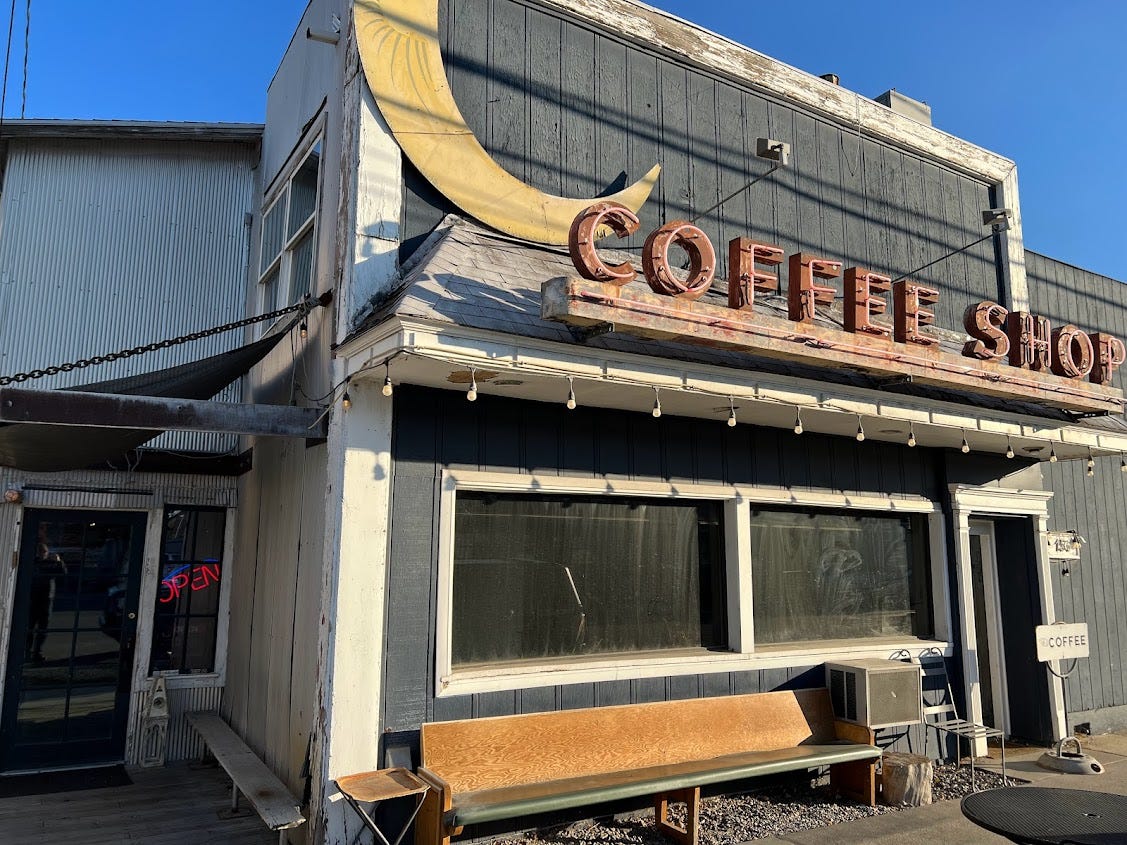“Come on out, it’ll be great. We can talk history, your new job, and fly fish the Provo River,” said my fishing buddy Rhett Bushforth. “Utah is beautiful. You’ll love it.”1
It didn’t take more than that. I’d eyed visiting the Beehive State (wait, really? Beehive State? I saw zero bees and somehow less hives. Ok then.) for quite some time and was eager to knock it off my states visited list.2 It was also important for other reasons than my own curiosity.
Since coming aboard with the Forest Service in August, I have been working nonstop to learn the landscape here in the West. Those of you following my social media posts have seen things like Middle Aged Man and the Mountain, or Middle Aged Man and Another Mountain, or Middle Aged Man Stubs His Toe on the Mountain. But in reality, I’ve felt that it was my duty to learn as much about these landscapes as I possibly could. If I am to talk with folks about the landscape, I damn well better show them the respect they deserve by actually getting out and experiencing the landscape.
One of the things you should know is that American place names are inherently colonial. As an example, I serve the Pike-San Isabel National Forests and the Cimarron and Comanche National Grasslands based out of Pueblo, Colorado. However, as much space as these places take up—and they’re huge at about 3 million acres—they are only a fraction of the ecosystem. The trees don’t know the name of the forest, neither do the rocks or streams. And the mountain goats, bighorn sheep, and elk don’t care which name we call their homes. And the Tribes I serve sure didn’t apply American placenames to these spaces before the Americans actually arrived. In other words, the boundaries of these spaces are both arbitrary and adminstrative. In my mind, I think of ecosystems like human bodies. A good cardiologist better know what the lungs do.3 If I am to understand a part of the forest, I need to understand how the other parts work too. So in my mind, learning about the forest west of the mountains is just as important to learning about the ones surrounding Pikes Peak. And the FREAC offered just that opportunity.
FREAC stands for the Front Range Early American Consortium. It’s an annual conference that’s been hosted for decades now by institutions alongside the Rockies and devoted to understanding what we might consider the Early American Republic.4 There are phenomenal scholars in attendance and I also got to be there.
I arrived a day ahead of time to allow myself the opportunity to learn more about the landscape and stayed in Salt Lake City based on PFH’s suggestion. Salt Lake City is home to one of the finest museums I’ve ever visited, the Natural History Museum of Utah, which I’ll write about in more detail later. They also have more breweries and Costcos per capita than any place on the planet. This means that if a zombie apocalypse ever does occur, SLC residents will well-equipped to handle the menace. They’ll probably also be hammered.
Historical construction can be a painstaking process. Typically scholars will labor in an archive, searching for clues to the past. After gathering enough information to make an argument, they’ll begin the process of writing, editing, and rewriting. This is where conferences come in. They’re integral to providing feedback to scholars on their direction and methodologies, and crucial to the ultimate success of a journal article or manuscript. This is different than peer review, where the main objective is to demonstrate to senior scholars that you have cited them enough.5
The wonderful thing about FREAC is that it was a small affair—maybe 25 people total at varying stages of their careers. There were faculty members at different institutions, emeritus scholars, and even a great group of students from the University of Wyoming who made the trip. More than that, they were all supportive of one another. Sometimes the big conferences can have nasty moments of gatekeeping and people incensed when their rings were not kissed. I’ve seen it happen. But none of that was on display here.
Plus, a wonderful thing happened for me. It was really the first time in a long while where I’d had the chance to spend real time with other historians in person. And just hearing the amazing work these folks were doing absolutely charged me up. As I sat and listened, I sketched out the exactly how my book will unfold. I plotted ideas for the second book as well. And in conversations with my peers I was able to better define my mission with the Forest Service. I cannot express how thankful I was to be invited to speak at the conference about my time as a scholar and more so, how wonderful it was to spend time amongst some truly wonderful people.
I caught a ride home yesterday, saw some beautiful views, and got some much needed rest. There is work to be done.
I do want to express my great gratitude to my friends Chris Jones and Chris Hodson for arranging the conference and ensuring its success. Awesome time and thanks for the invite. Can’t wait to do it again.
Other news
This week sees me on not one, but two podcasts as I sat down with Brian Feltman and Bill Allison of the Military Historians Are People Too! Podcast. It was a great experience getting to be the guest for once. These guys are great and we had a wide ranging conversation talking about my career, autism, fatherhood, failed relationships, and everything else under the sun. I hope you’ll check it out. Links below:
While in Utah
Sadly because I am paid to “work” and not do “not work” I didn’t get to visit as many places as I normally would. However, I did get to sample a few places that I thought were highly worth the trip.
SALT LAKE CITY-
Red Iguana. Everyone will tell you to go here. They are correct. I went here twice. It’s that good. If you’re in SLC, you kinda have to go here. I had the puntas de filete a la norteña both times. It was excellent. Oh, you can go to Red Iguana or Red Iguana 2. The second has better wait times.
Fisher Beer. I was legitmately shocked at both how many breweries SLC had as well as how great this one was. Terrific beer, fantastic service. Will absolutely visit again.
PROVO-
BYU Campus. These folks hosted the conference and even though I didn’t get a chance to see much of the campus, what I did see was very beautiful. Had a couple interactions with the students there, and they are terrific. Go visit sometime.
Rugged Grounds. I like to try different coffee shops when I go to places and this was my favorite. Really great service. Outstanding coffee. Really cool atmosphere. If I get to go back to Provo one day, I’ll stop in.
Alrighty, that’s probably enough for now. I do however want to leave you with a link to Natalie Zemon Davis’ classic book, The Return of Martin Guerre. I don’t receive anything if you get a copy, but it’s pretty much required reading for every historian coming up through the ranks. I read it. I never met Dr. Davis, but I sure wish I had. I hope that wherever you are, you are safe and well.
Names changed to protect the innocent, since said fishing buddy did not actually come fishing. I understand a second name change is underway, since said Phantom Fishing Historian (PFH) has entered the Witness Protection Program out of shame.
Fun fact: I was in Philadelphia this past January for the American Historical Association Annual Conference and had never visited New Jersey. I was literally a half mile from the border at one point. I still didn’t go. That’s how much I valued Jersey. I’ll get there eventually, but probably not willingly. But I digress.
My lungs do not work well above 12,000 feet. Ask me how I know.
Basically the late colonial period and years immediately following the formation of the United States but the cool thing as a historian is that you can always play with the dates to make it relevant to your work.
Ming vases are less delicate than academics’ egos.








